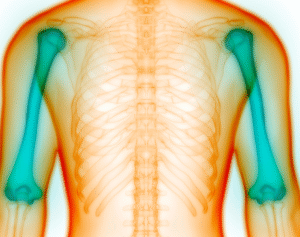Fibromyalgia is a chronic condition characterized by widespread musculoskeletal pain, fatigue, and tenderness in localized areas. Among its various manifestations, leg discomfort is a common complaint, affecting mobility and quality of life. Understanding how fibromyalgia impacts the legs is crucial for effective management and relief.
Understanding Leg Pain in Fibromyalgia
Leg pain in fibromyalgia patients often presents as a deep, aching sensation, sometimes accompanied by burning or throbbing feelings. This discomfort can be persistent or intermittent, varying in intensity throughout the day. The pain is typically bilateral, affecting both legs, and may be exacerbated by physical activity or prolonged periods of inactivity.
Common Symptoms Affecting the Legs
- Muscle Stiffness: Many individuals experience stiffness in the leg muscles, particularly after waking up or remaining in one position for extended periods.
- Restless Legs Syndrome (RLS): A condition characterized by an uncontrollable urge to move the legs, often accompanied by uncomfortable sensations.
- Tingling and Numbness: Some patients report sensations of pins and needles or numbness in the legs, which can be distressing and impact daily activities.
- Fatigue: Persistent tiredness can lead to a feeling of heaviness in the legs, making movement more challenging.
Potential Causes of Leg Symptoms
While the exact cause of fibromyalgia remains unknown, several factors may contribute to leg-related symptoms:
- Central Sensitization: An increased sensitivity of the nervous system, leading to amplified pain signals.
- Sleep Disturbances: Poor sleep quality can exacerbate pain perception and fatigue, affecting leg function.
- Circulatory Issues: Some patients may experience reduced blood flow to the legs, contributing to discomfort.
Management Strategies
Addressing leg symptoms in fibromyalgia involves a multifaceted approach:
- Physical Therapy: Engaging in low-impact exercises can improve muscle strength and flexibility.
- Medications: Certain drugs may help alleviate pain and improve sleep quality.
- Lifestyle Modifications: Incorporating stress-reduction techniques, maintaining a balanced diet, and establishing a regular sleep schedule can be beneficial.
Conclusion
Leg discomfort is a significant aspect of fibromyalgia that can hinder daily functioning. By understanding the underlying causes and implementing appropriate management strategies, individuals can alleviate symptoms and enhance their quality of life. Consulting healthcare professionals for personalized treatment plans is essential in effectively addressing leg-related issues in fibromyalgia.
Frequently Asked Questions
1. Can fibromyalgia cause leg cramps?
Yes, some individuals with fibromyalgia experience leg cramps due to muscle stiffness and fatigue.
2. Is walking beneficial for fibromyalgia-related leg pain?
Engaging in gentle walking can help improve circulation and reduce stiffness, potentially alleviating leg pain.
3. How does sleep affect leg symptoms in fibromyalgia?
Poor sleep quality can heighten pain perception and lead to increased leg discomfort.
4. Are there specific exercises recommended for leg pain in fibromyalgia?
Low-impact activities such as swimming, yoga, and stretching can be beneficial for managing leg pain.
5. Can dietary changes impact leg symptoms in fibromyalgia?
Maintaining a balanced diet rich in anti-inflammatory foods may help reduce overall pain levels, including in the legs.
6. Should I consult a specialist for fibromyalgia-related leg pain?
Yes, consulting a rheumatologist or pain specialist can provide targeted treatment options for leg discomfort associated with fibromyalgia.



